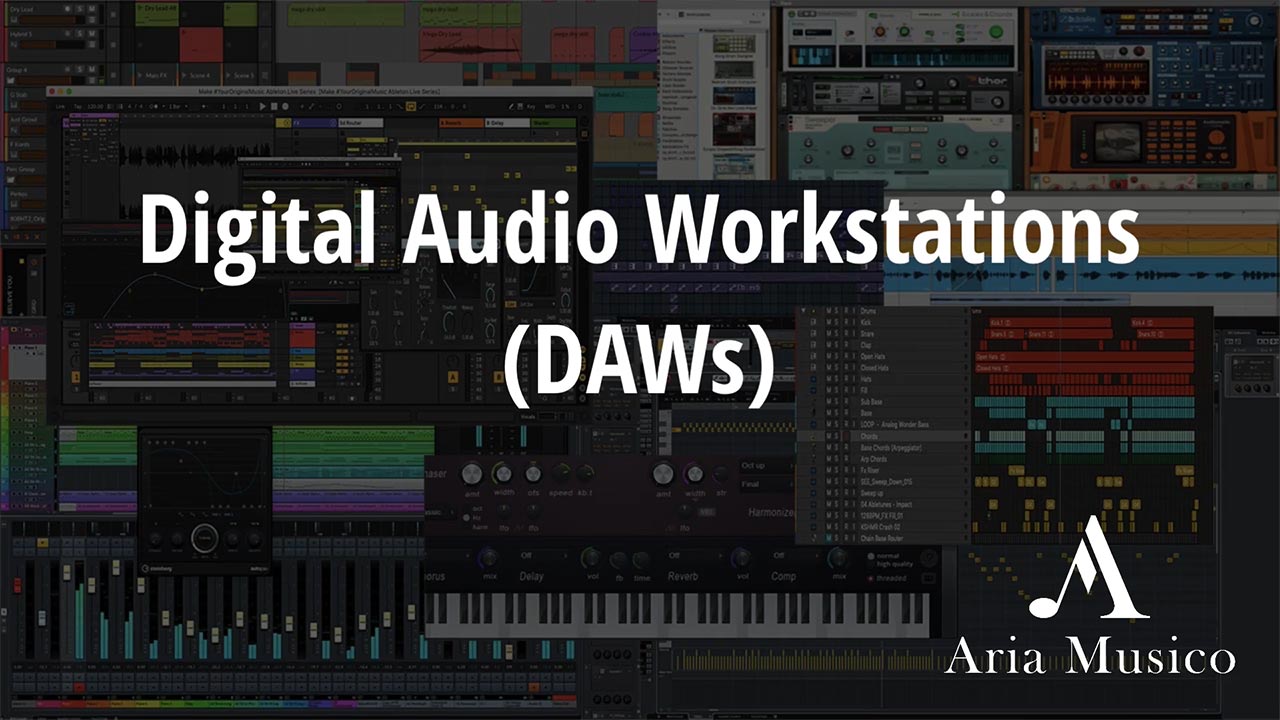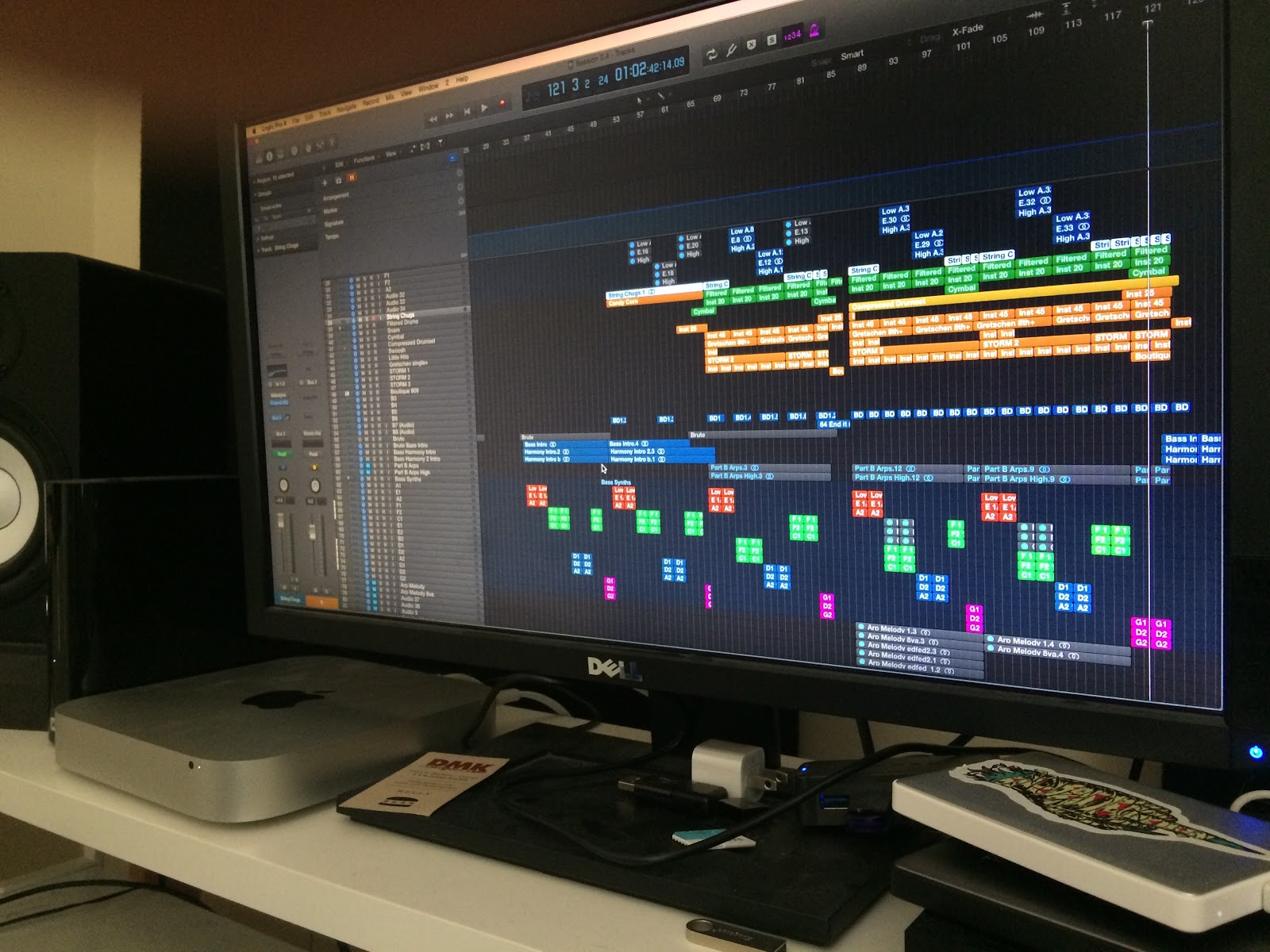Using a Digital Audio Workstation (DAW) with an audio interface is the cornerstone of modern music production. For music lovers looking to elevate their creative process, understanding this crucial pairing is essential.
At theautonomics.com, we’re passionate about helping you achieve your musical goals, and this guide will walk you through everything you need to know about seamlessly integrating your DAW and audio interface. How to use Digital Audio Workstations with Audio Interfaces is a skill that unlocks a world of possibilities.
Explore
- 1 Understanding the Core Components: DAWs and Audio Interfaces
- 2 Connecting Your Audio Interface to Your DAW
- 3 Setting Up Input and Output Routing
- 4 Monitoring Your Audio: Direct Monitoring vs. DAW Monitoring
- 5 Troubleshooting Common Issues
- 6 Advanced Techniques: Using Multiple Inputs and Outputs
- 7 Choosing the Right Equipment: DAW and Interface Compatibility
- 8 Practical Tips for Seamless Workflow
- 9 Final Thoughts: Embracing the Creative Journey
Understanding the Core Components: DAWs and Audio Interfaces
Before diving into the practical aspects of How to use Digital Audio Workstations with Audio Interfaces, let’s clarify what each component does. A Digital Audio Workstation, or DAW, is the software heart of your recording setup. Think of it as your digital studio, providing the tools for recording, editing, mixing, and mastering audio. Popular DAWs include Ableton Live, Logic Pro X, Pro Tools, Cubase, and FL Studio, each with its own strengths and user interface. Choosing the right DAW often comes down to personal preference and workflow.
An audio interface, on the other hand, is the hardware bridge between your computer and your audio equipment. It converts analog audio signals (from microphones, instruments, etc.) into digital signals that your DAW can understand, and vice versa. Audio interfaces typically offer multiple inputs and outputs, allowing you to connect various microphones, instruments, and headphones. The quality of your audio interface significantly impacts the sound quality of your recordings. How to use Digital Audio Workstations with Audio Interfaces efficiently relies heavily on understanding your interface’s capabilities.
Connecting Your Audio Interface to Your DAW
The first step in your journey of How to use Digital Audio Workstations with Audio Interfaces is establishing a solid connection. This involves physically connecting your audio interface to your computer via USB, Thunderbolt, or FireWire (depending on your interface’s specifications). Once physically connected, you need to configure your DAW to recognize the interface.
This process varies slightly depending on your specific DAW and audio interface, but generally involves opening your DAW’s preferences or settings menu. Look for an “Audio” or “Hardware” section where you’ll select your audio interface from a list of available devices. After selecting your interface, your DAW should automatically detect the number of inputs and outputs available. How to use Digital Audio Workstations with Audio Interfaces effectively starts with this crucial step.
Setting Up Input and Output Routing
With your audio interface recognized, the next crucial aspect of How to use Digital Audio Workstations with Audio Interfaces is setting up input and output routing. This determines which inputs on your interface are routed to which tracks in your DAW, and which outputs send audio to your monitors, headphones, etc.
Most DAWs use a visual mixer or routing panel to manage this. You’ll typically see a list of inputs and outputs corresponding to your interface’s physical connections. For example, if you have a microphone plugged into input 1, you’ll want to route that input to a track in your DAW. Similarly, you’ll need to configure your outputs to send audio to your monitors or headphones. How to use Digital Audio Workstations with Audio Interfaces efficiently requires understanding this routing process thoroughly.

Monitoring Your Audio: Direct Monitoring vs. DAW Monitoring
One of the most important aspects of How to use Digital Audio Workstations with Audio Interfaces is understanding monitoring options. Direct monitoring allows you to hear your audio signal directly from your instrument or microphone, without any processing from your DAW. This is useful for tracking, as it provides low-latency monitoring, preventing any delay that can hinder your performance.
DAW monitoring, on the other hand, routes the audio through your DAW’s processing chain. This is useful for hearing effects and processing applied to your tracks. Many audio interfaces and DAWs offer options to switch between direct and DAW monitoring, allowing you to choose the best option for your workflow. How to use Digital Audio Workstations with Audio Interfaces effectively involves mastering these monitoring techniques.
Troubleshooting Common Issues
Even with careful setup, you might encounter some issues when learning How to use Digital Audio Workstations with Audio Interfaces. Common problems include driver issues, latency problems, and audio dropouts.

Driver issues often stem from outdated or corrupted drivers for your audio interface. Check the manufacturer’s website for the latest drivers and install them. Latency, or delay, can be caused by various factors, including high buffer sizes in your DAW or insufficient processing power. Experiment with different buffer sizes to find a balance between low latency and stability. Audio dropouts can be caused by driver issues, buffer overload, or insufficient processing power. Try lowering the buffer size or closing unnecessary applications. How to use Digital Audio Workstations with Audio Interfaces requires patience and troubleshooting skills.
Advanced Techniques: Using Multiple Inputs and Outputs
Once comfortable with the basics, you can explore the advanced capabilities of How to use Digital Audio Workstations with Audio Interfaces. Using multiple inputs allows you to record multiple instruments or microphones simultaneously. This is particularly useful for recording bands or complex musical arrangements. Similarly, multiple outputs allow you to send audio to different destinations, such as separate monitor mixes for different musicians or sending audio to external effects processors.
Understanding the capabilities of your audio interface and DAW is crucial for harnessing these advanced techniques. How to use Digital Audio Workstations with Audio Interfaces efficiently involves mastering the art of routing signals to achieve your desired results.
Choosing the Right Equipment: DAW and Interface Compatibility

The success of your How to use Digital Audio Workstations with Audio Interfaces journey hinges on choosing compatible equipment. Ensure your chosen DAW is compatible with your operating system and that your audio interface is compatible with both your DAW and operating system. Consider the number of inputs and outputs you need based on your recording setup. Higher-quality audio interfaces generally offer better sound quality and lower latency, but come at a higher price.
Researching reviews and comparing specifications will help you make an informed decision. How to use Digital Audio Workstations with Audio Interfaces effectively begins with selecting the right tools for the job.
Practical Tips for Seamless Workflow
To truly master How to use Digital Audio Workstations with Audio Interfaces, consider these practical tips:
Organize your projects efficiently. Use a clear naming convention for your files and folders.
Regularly back up your projects to prevent data loss.
Learn keyboard shortcuts to speed up your workflow.
Experiment with different settings and plugins to find your ideal sound.
Don’t be afraid to experiment and learn from your mistakes. How to use Digital Audio Workstations with Audio Interfaces is a journey of continuous learning.
Final Thoughts: Embracing the Creative Journey
Learning How to use Digital Audio Workstations with Audio Interfaces opens doors to endless creative possibilities. By understanding the fundamentals, troubleshooting effectively, and continuously refining your skills, you can unlock your full potential as a musician. Remember, the key is consistent practice and a willingness to experiment. Embrace the learning process, and enjoy the journey of creating your music.
